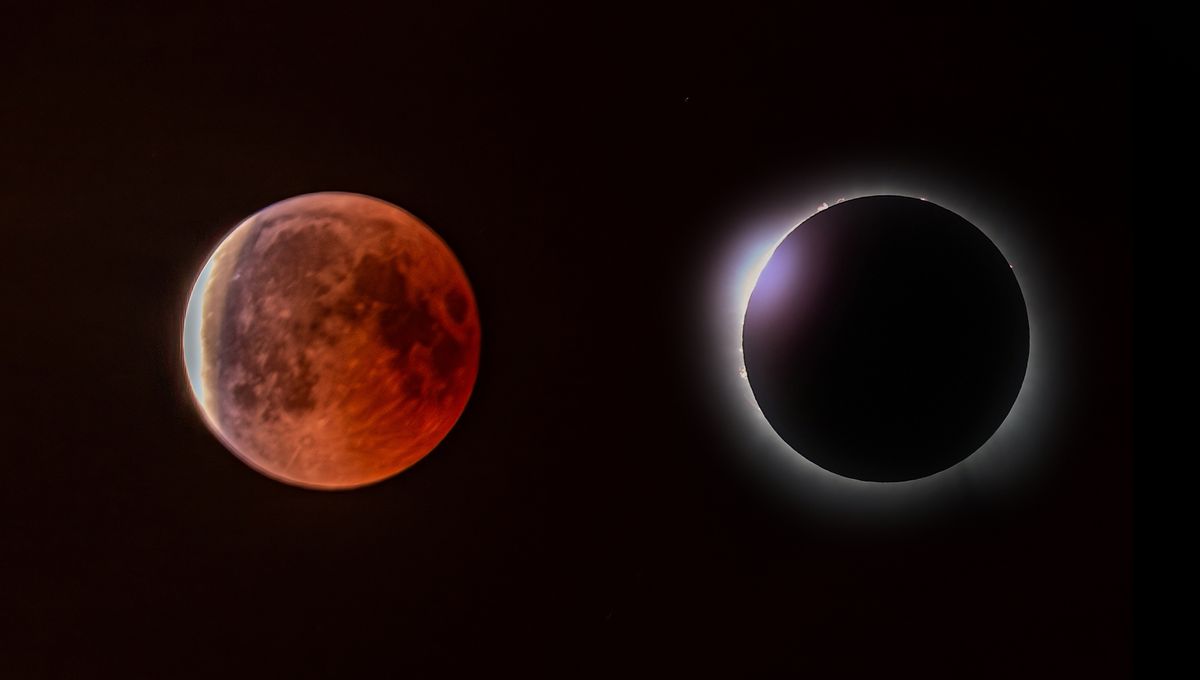
Eclipses are incredible celestial events and they are quite common, happening many times a year. The issue is that the peculiar celestial alignment that makes them possible doesn’t happen every month, and for solar eclipses, only a small portion of the planet actually gets to see them. These peculiarities have made them seem like an extremely rare thing, but at the same time – if you follow eclipse news – you might have noticed that they often come in pairs. So what gives?
ADVERTISEMENT
To understand what goes on, we have to learn one of the most beautiful terms in the English language: syzygy. This excellent Scrabble world defines the alignment of three celestial bodies. Relevant to our discussion are the Sun-Earth-Moon syzygy and the Sun-Moon-Earth syzygy, respectively lunar and solar eclipses. As astronomer Katie Mack famously pointed out, an Earth-Sun-Moon syzygy is an apocalypse.
The alignment only happens at special times, and that’s because the orbit of the Moon around the Earth is slanted with respect to the orbit of the Earth around the Sun. The Moon crosses the orbital plane of the Earth twice and these are called nodes. When the nodes are near the full Moon or the new Moon, then you can have a lunar or solar eclipse.
The nodes do not stay still though, otherwise we would have eclipses every month or never. The nodes gradually rotate around the Earth, and they complete a full rotation in 6,793 days, which is roughly 18.6 years. Only when the Moon is at the node and the Sun is in the right position can the eclipse occur.
The 14 days between the new Moon and full Moon (or vice versa) are not long enough for the node to have shifted enough, so solar and lunar eclipses are often in pairs. Often, but not always, because the alignment is far from perfect. This is why you get partial eclipses or, in the case of the Moon, even penumbral eclipses.
Eclipses repeat on an 18-year cycle that was discovered independently by many cultures on Earth, from Mesopotamia to Torres Strait Islanders in what is now Australia. It’s called the Saros cycle, from the Greek word for sweep, and it is exactly 223 synodic lunar months.
In the meantime the Earth rotates a fair bit, so the eclipses still happen but just not in the same region. It takes at least 54 years (3 Saros cycles) to have the same eclipse in the same region, and even longer (about 375 years) for any specific part of the planet to have the same solar eclipse again. This is easier for lunar eclipses as they are visible across a whole hemisphere at a time.
ADVERTISEMENT
It is extraordinary to see eclipses as we see them on Earth in the first place. We are at a special time in the history of our planet where the Moon can often completely obscure the solar disk (eat your heart out Mars), so even though they don’t come as often as we might like, we should feel very lucky.
You can check out Time&Date a list of upcoming eclipses!
Source Link: Why Do Eclipses Often Come In Pairs?